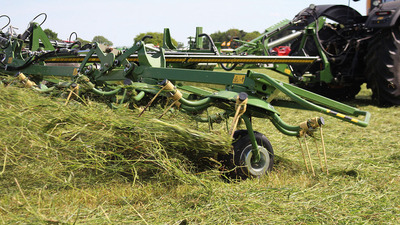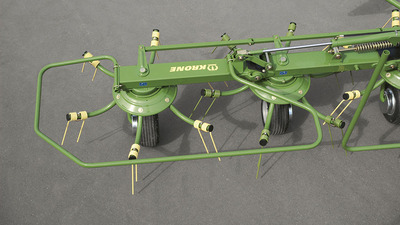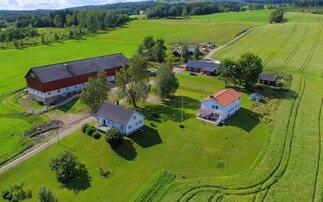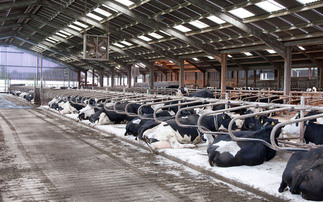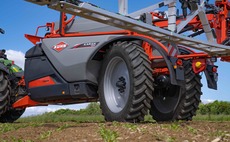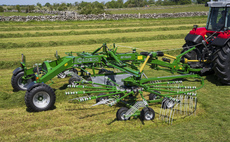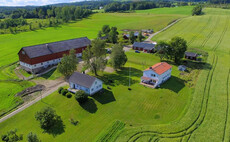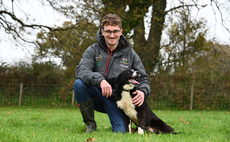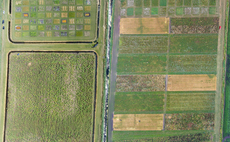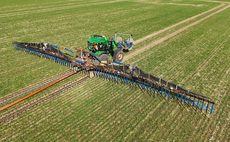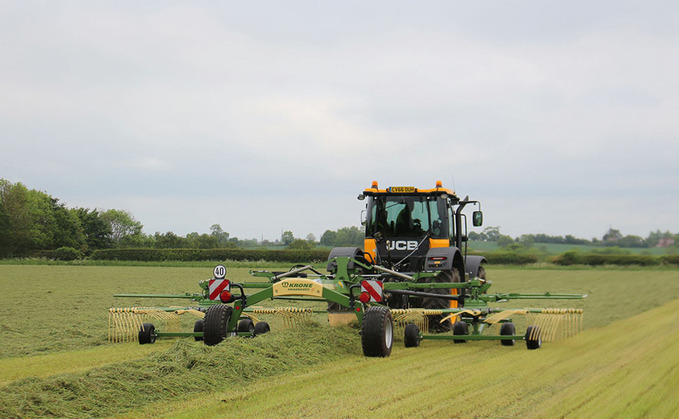
Tedding and raking are the unsung heroes of silaging and should be given as much care and attention at harvest as any part of the silage-making process.
Taking the time to select the right tedders and rakes for your farm and setting them up correctly will pay dividends in the silage clamp.
James Duggleby, of Krone, believes tedding and raking are the ‘unsung heroes' of silage-making, and, when done well, promote an effective wilt and aid silaging efficiencies.
However, all too often they are seen as the jobs which need to be done quickly to avoid slowing up harvest or are given to the least experienced person on-farm.
Such an approach can lead to and dry matter losses in the clamp or inconsistent wilting and reduced silage quality.
Mr Duggleby believes tedding in particular should be placed further up the list of priorities.
Integral
"The tedder was historically seen as something used when it rained to dry out the grass, rather than an integral part of silage-making," he says.
"Instead, it should be seen as part of the process of achieving a consistent wilt.
If there's big variation in moisture content, it's not good for ." Mr Duggleby advises thinking about the following:
Tedding
- View tedding as key part of silaging.
Tedding is the best way to create an even wilt.
- 3-5 miles/hour
Do not go too fast.Increasing the forward speed of the tedder is not the answer for covering ground quicker. Instead, opt for a wider machine.
- Match rotor diameter with the job you are doing
Small rotor diameters of around 1.32m are more suited to hay-making as they provide a finer mix and a more uniform wilt.
A larger diameter of about 1.82m can be used for silage-making - this will reduce machinery costs.
If you are silage and hay making, opt for a medium diameter.
- Think about the wilt you need
Do not match the tedder size with the size of your mower. Instead work out what acreage you need to ted and what speed do you need to cover ground to achieve the desired wilt. The size of the tedder should be matched to this.
For several hundred acres, go for a 13, 16 or 20m tedder.
If you only have 100 acres, go for a 5.5 or 7.8m machine.
- Think about headland spreading
Selecting a tedder with a headland boundary system will limit how far the crop is thrown and prevent valuable forage from being lost in the hedge.
Raking
- Think about swath size
Rather than matching the rake with mower, ask what size swath you want and the amount you are going to be raking and then choose accordingly.
- What is the productivity of the harvest machine?
Match the rake size with the productivity of the harvest machine. This will reduce the likelihood of the forager catching up with the rake and putting pressure on the rake operator to drive faster.
A baler or forage wagon will have a lower productivity than a forage harvester, so a single-rotor rake or small twin-rotor rake will be suitable. Aim for a large, twin-rotor rake of 8-9m or a four-rotor rake when working with a forage harvester.
- Take time to adjust height
Adjust the height of the tines as necessary in each field to reflect crop yields. The tines should never touch the ground.
- Consider using a lift tine
Lift tines have an angled bottom to ‘flick' up the grass. This means they can work higher off the ground, which reduces soil contamination risk.
- Put in place systems to adjust tines easily
Can you put in place in-cab adjustment systems to make tine adjustments easier and reduce time pressures in the field?
How to set up a rake
Taking 10 minutes out of the day to set up the rake correctly can be time well spent at silage-making, says Volac's Peter Smith.
He says: "It is crucial that the height of the tines are adjusted so they do not dig into the ground and cause soil contamination of the crop.
If soil is brought into the clamp, it can lead to butyric fermentation, reduced palatability and up to 50% dry matter losses." Mr Smith advises:
- Set up the rake on concrete hard standing first - the tines should not be touching the ground.
- Readjust as soon as you enter a field as the height of the tines will depend on the grass cutting height used.
- It's better to leave a little grass in the field than have the tines too low and risk bringing soil into the clamp.
- Ensure tyre pressures are correct and even across all four tyres - if they are too soft, the rake will bounce, causing it to dig into the ground.
- Watch the operation in the field and ensure it is done correctly.
